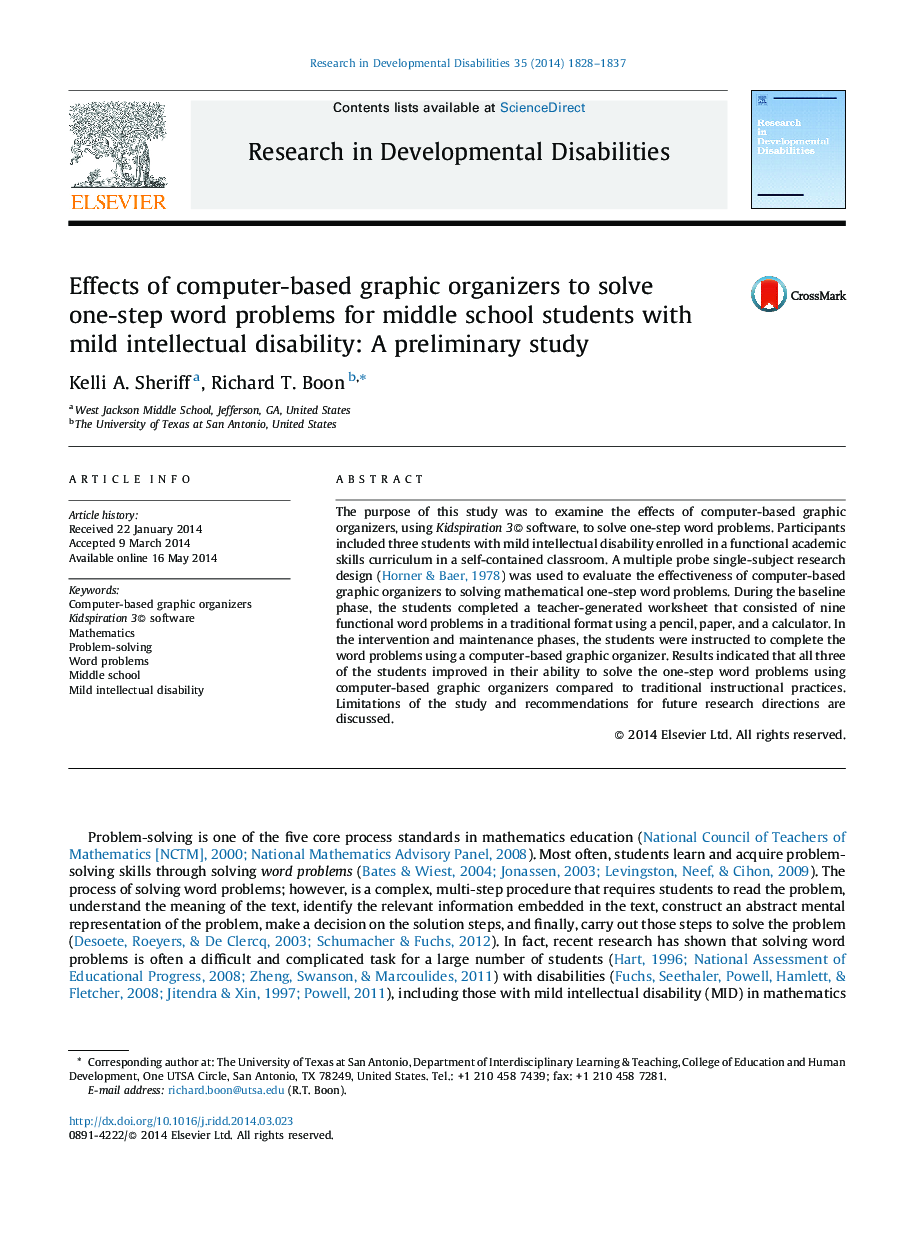| Article ID | Journal | Published Year | Pages | File Type |
|---|---|---|---|---|
| 371497 | Research in Developmental Disabilities | 2014 | 10 Pages |
•Students with mild intellectual disability often have difficulty in mathematics instruction.•We examined the effects of computer-based graphic organizers to solve one-step word problems.•A comparison was made between a paper-and-pencil versus a computer-based graphic organizer format.•Results indicated the use of computer-based graphic organizers proved more effective.
The purpose of this study was to examine the effects of computer-based graphic organizers, using Kidspiration 3© software, to solve one-step word problems. Participants included three students with mild intellectual disability enrolled in a functional academic skills curriculum in a self-contained classroom. A multiple probe single-subject research design ( Horner & Baer, 1978) was used to evaluate the effectiveness of computer-based graphic organizers to solving mathematical one-step word problems. During the baseline phase, the students completed a teacher-generated worksheet that consisted of nine functional word problems in a traditional format using a pencil, paper, and a calculator. In the intervention and maintenance phases, the students were instructed to complete the word problems using a computer-based graphic organizer. Results indicated that all three of the students improved in their ability to solve the one-step word problems using computer-based graphic organizers compared to traditional instructional practices. Limitations of the study and recommendations for future research directions are discussed.
